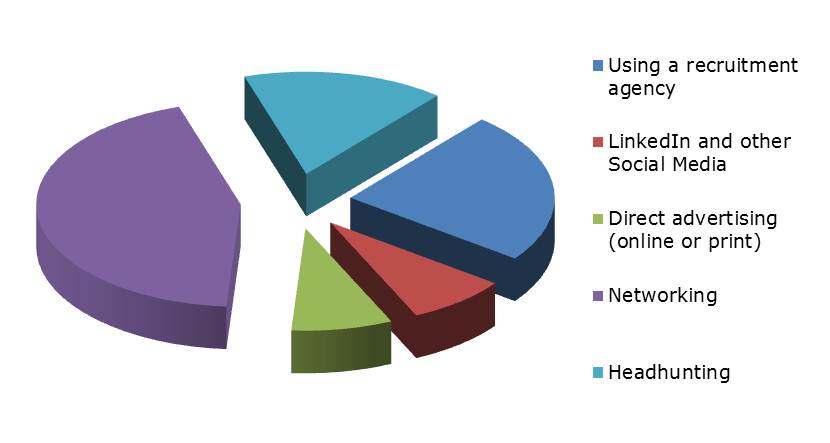Each month Innergy research an area of business that is pertinent to our customer database, carrying out a brief survey and providing some practical ideas that can be immediately implemented to help individuals, teams and organisations overcome some of the key challenges they face and exploit any opportunities available to them.
In October’s review we asked those polled what they believed were the most effective methods of sourcing and recruiting new employees for their business and by some margin the use of networking was above everything else.
If we work back in reverse order, the use of LinkedIn and other Social Media were marked quite low (as low as the use of Direct Advertising) which is fascinating as these, in essence are the most obvious high volume networking solutions available on the market and networking was the number one method for those polled.
Based on our experience working and advising organisations on their internal recruitment strategies, the issue with Social Media, such as LinkedIn, for sourcing and recruiting is not so much the effectiveness of those solutions, but more how much we know how to use them and how much time we actually devote to them. In many cases, the answer to both questions is “very little”.
On meeting with some of the LinkedIn recruitment team just recently, I was amazed at both the capability and “unknown-to-me” functionality that existed – simple plugins, applications and tools that significantly increase our exposure and reach when sourcing new potential employees and promoting our brands (contact LinkedIn directly, via LinkedIn of course, and they are more than happy to help you understand how some of these can work for you).
Headhunting came in third as a sourcing route and I think would have been a lot higher if people really knew how to effectively headhunt. Often it is perceived as simply finding a potential candidate, getting hold of their telephone number and giving them a call out of hours to see if they want a job. But it is far more than that.
Headhunting is a real art and allows you to “court” talent that will see a far quicker and often greater return on your investment in time and remuneration.
More importantly, headhunting is not a process that starts just as you need a new employee to work for you – it is an on-going and full time process which is where the number two methodology comes in, using a Recruitment Agency, as this is in essence what they do all day, every day.
The argument for or against using agencies is, in my opinion, quite easy to answer – if you find a good recruitment agency (and there are many out there) and they will enable your business to exercise its true potential and give you a far greater ROI in a way that you simply could not do yourself.
However, when you do work with a recruitment agency remember that this is a business partnership that requires you to work with them, not them working for you. If you treat them as just a supplier, driving down their fees, window shopping with other agencies and only responding to their calls / emails when you want, then it is semi impossible for them to do their job effectively.
Work alongside them in partnership and the relationship will go from being transactional to being truly transformational.
We’ll discuss the process of Networking in the next part of this series on recruiting new employees…
Comments